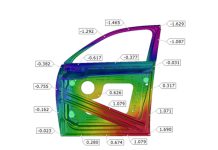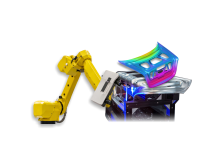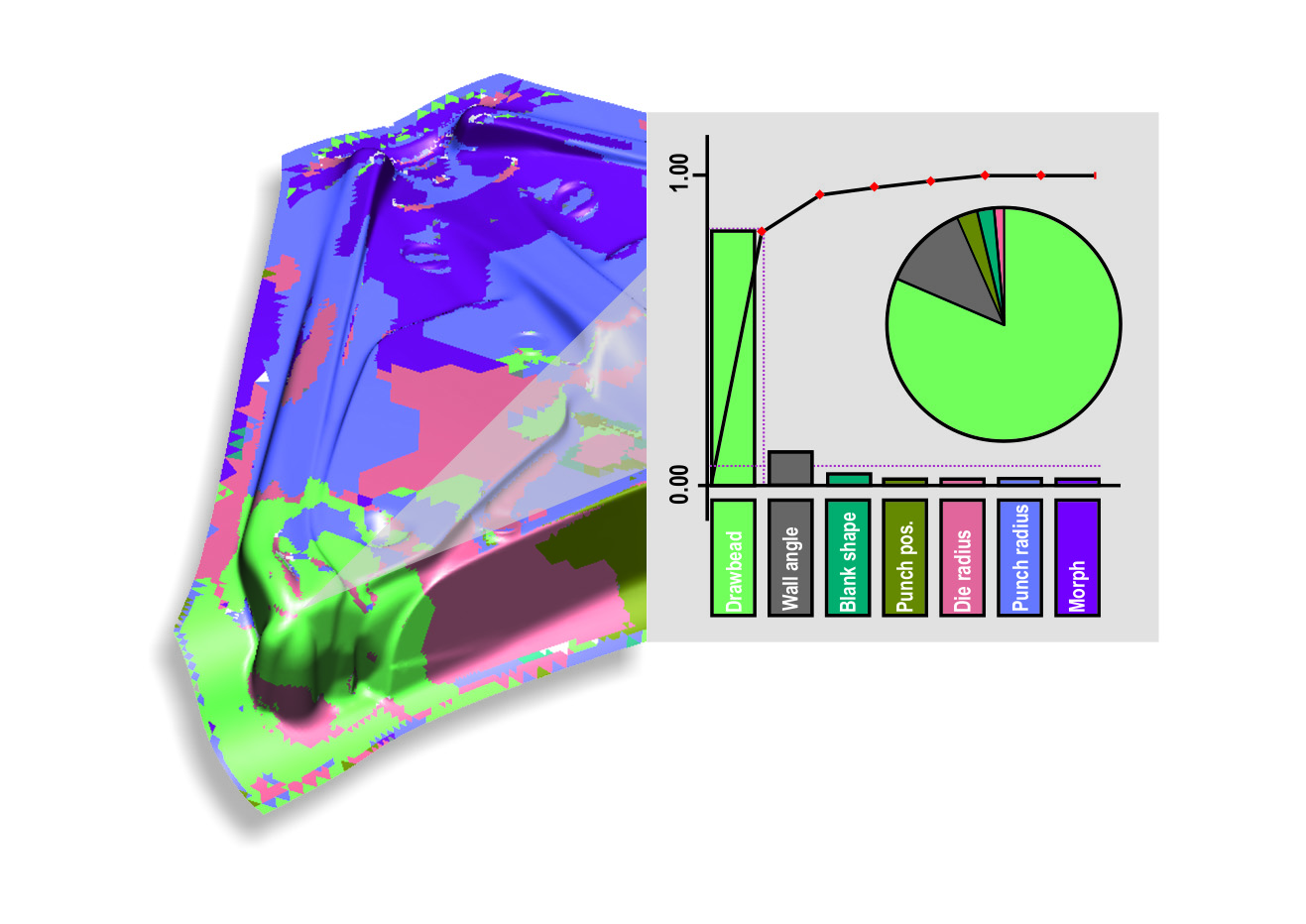Introduction:
The development of stamped parts for the industry is generally considered as a well-established segment, where the technologies involved (3D modeling, CNC programming, etc.) are perfectly mastered by trained and experienced personnel in the execution of the necessary tasks. Nowadays this even includes computer simulation systems of stamping processes, used for early verification of the functionality of the stamping processes under study through sophisticated calculation models employing the Finite Element Method (FEM) and advanced graphical representations of the results of the sheet metal forming and its assembly, in what is now known as the “Digital Process Twin”.
However, the vast majority of decision makers working in this field, in particular supervisors and managers of the involved departments within each company, still have an older educational background and bring an experience that predates the availability of the resources offered by the Digital Twin. As a result, there’s a tendency for developments in this segment to still stick to traditional planning and procedures, generally employing the Digital Process Twin only as a kind of “insurance” against possible very serious mistakes in the process definition and design of tools and devices. The full potential of these technologies to reduce costs and deadlines in the development of tooling while improving the quality of the parts produced and the productivity of the stamping and assembly lines of stamped sheet metal parts is thus seldom applied.
The objective of this work is then to discuss how the management of the development of stamped parts and assemblies and their tooling can be improved to allow the most comprehensive use of the resources made available by the Digital Twin, ensuring full use of the advantages offered by it and maximizing the benefits obtained with its use. The potential applications of these technologies to the various steps required to achieve quality and productivity in the manufacturing of sheet metal components and their assembly into assemblies will be presented, as well as how their application should be planned and coordinated with the other activities in order to maximize the use of the important information that can be obtained through their use.
This blog series is given in four parts.
This part one explores the early stages in the development of stamped parts and assemblies. Part two covers planning and budgeting. Part three, tool design and construction. Part four, tryout and production. Make sure you read the full series.
See parts: One | Two | Three | Four
Early stages in the development of stamped parts and assemblies:
Traditionally, the product engineering department’s personnel are responsible for the development of stamped parts and assemblies, focusing to adapt the ongoing projects to the work conditions of final products, whether they are vehicles, electronics, household appliances or any other good that includes this type of component. Therefore, the application of the Digital Twin of the product is already a well-established technology, being widely employed in analyses of structural strength, vibrations, thermal effects, etc. However, in many cases the designers and engineers in charge of new projects have only limited knowledge about the actual manufacturing processes of each component and assembly for which they are responsible, because their educational background and experience is focused on evaluating how each one works in operation, but not on specific manufacturing details.
It is clear that some knowledge about manufacturing process is fundamental to any part design but requiring product designers to be familiar in detail with the manufacturing processes that will be employed for each component they develop is not something that many companies can afford to execute. Furthermore, the difficulty of finding personnel with sufficient experience prevents this being a practical approach. Therefore, a lot of the problems found in the development of stamping and assembly processes of sheet metal parts result from details that are often simple but were not foreseen in the conception of these parts. Items such as wall angles, bending radii, drawing depth, tolerance specifications, and so on could often be easily modified at the initial design stage of the components without affecting their functionality, with great potential to simplify manufacturing and reduce the costs of production processes and tooling, thus allowing cheaper and better quality of the obtained end products. But that’s only if stamping and assembly issues could be known in advance.
At this point the application of the Digital Process Twin, even if using simplified models, allows at least a quick assessment of the suitability of the ongoing design to the intended manufacturing and assembly processes, allowing to optimize each part for the manufacturing conditions and not only for the operational ones. If properly applied, this capability has great potential to shorten the time taken to put projects into production and reduce their overall costs while at the same time improving their quality. The Figure 1 below shows an example of analysis and optimization for manufacture of a stamped part by using a Digital Twin model:
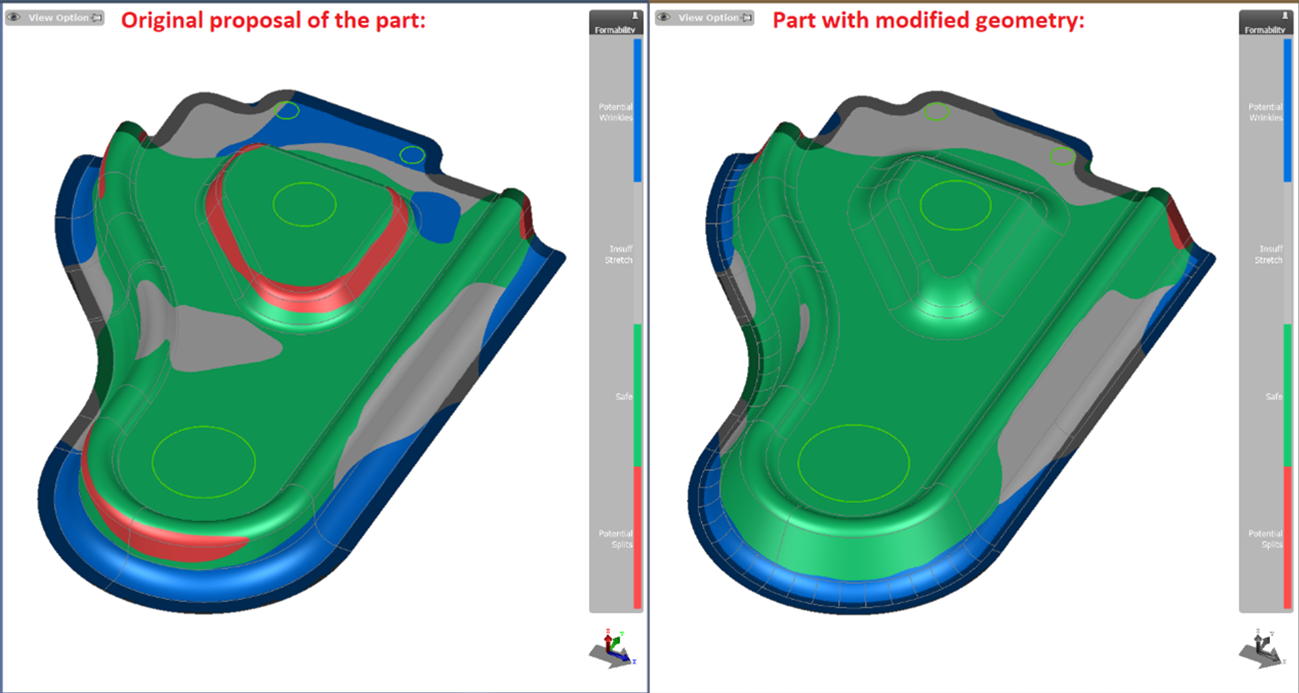
Fig. 1: Initial design of sheet metal part that shows rupture issues during the stamping process, and the modified geometry of the same part that shows better stretching with lower risk of rupture.
The Figure 2 below shows the assembly study of stamped parts joined by welding, allowing the dimensional result of the final assembly to be evaluated in advance and consequently to determine more assertively the dimensional tolerances that must be specified for each of the individual components.
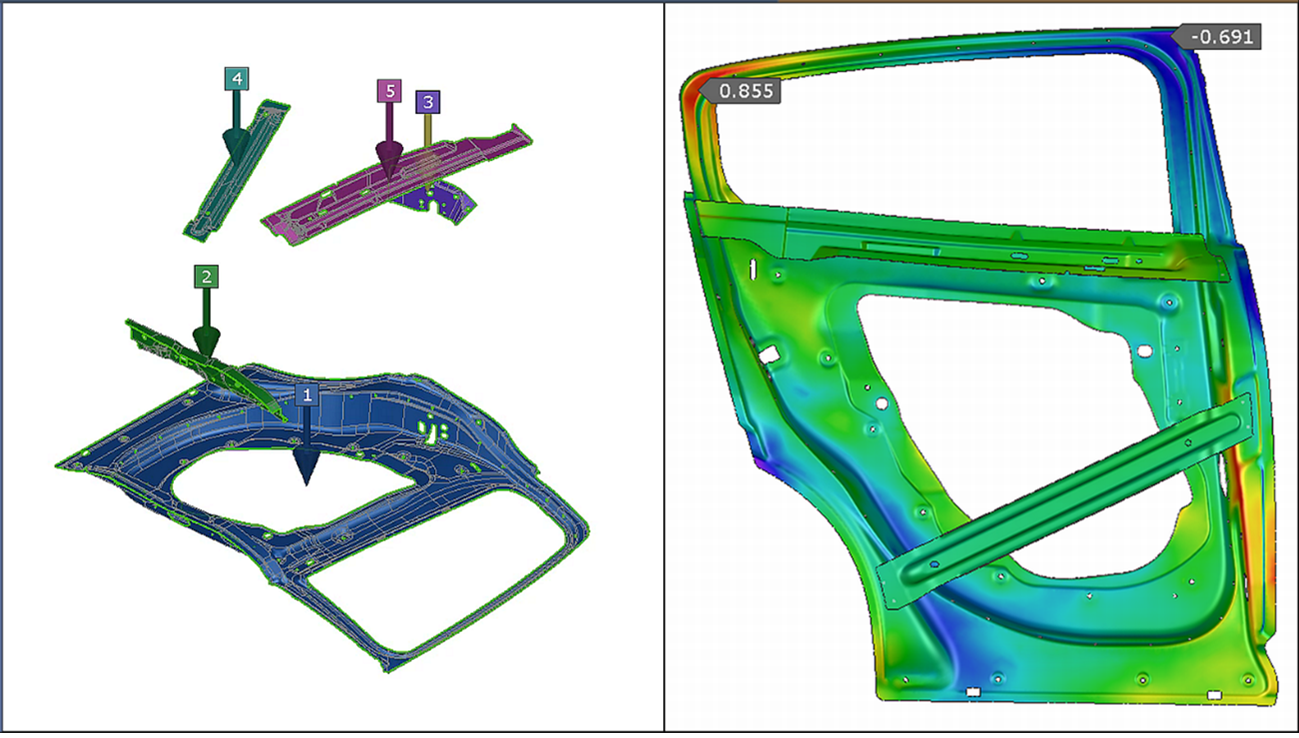
Fig. 2: Evaluation of an assembly and welding process of stamped parts, showing the dimensional results of the final assembly.
The implementation of the digital twin in the Product Engineering department can be done in different ways, ranging from training the department’s own engineers and designers in the technology application to the formation of a dedicated team of specialists to support these activities, passing through the integrated support of the Manufacturing Engineering to the Product Engineering department. In terms of use, the simplified Digital Twin models applicable at this stage do not require deep knowledge of the details of the stamping processes and obtain results very quickly, so its use does not tend to significantly affect the development of the projects. However, implementation faces two obstacles that must be anticipated to enable its success: The definition of the development deadlines and the time discrepancy between the investments required and the return obtained.
In the case of development deadlines, they are affected not so much by the implementation of the Digital Twin technology itself, but by the fact that once manufacturing issues are identified in the parts and assemblies under development, it is necessary to modify the designs while considering all the stamping, assembly, and operation requirements at once. Evidently this demands time, extending project deadlines considerably although at the end only the same number of planned parts/assemblies was actually designed. Thus, if analyzed only from the point of view of the Product Engineering alone the implementation of the Digital Twin only serves to delay the work of the department. And this highlights the second obstacle, which is the fact that the advantages of using the Digital Twin at this early stage will not be noticed until the tool designs are started or the tools are put into tryout and production, usually only well after the Product Engineering has finished its work on that project.
So, despite the evident advantages it offers, the implementation of the Digital Twin concept of manufacturing processes in the early design stages of stamped parts and assemblies may appear at first glance to be inconvenient and even counterproductive, if only the Product Engineering department itself is considered. It will be up to the highest levels of management, who have responsibility for dealing with product development as a whole, from the tool making to the serial production, to assess the benefits that their use can bring to companies and to ensure that schedules, procedures and integration between departments are adapted so that the available technologies can be properly employed already in the initial stage, in order to achieve the great potential benefits later in the tooling preparation and during production.
This blog series is given in four parts.





